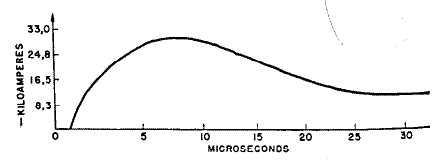- This topic has 1 reply, 1 voice, and was last updated 2 years, 11 months ago by .
-
Topic
-
What consideration shall be taken in lightning protection grounding systems? Are there any estimation for lightning current surge?
What consideration shall be taken in lightning protection grounding systems? Are there any estimation for lightning current surge?
Viewing 1 replies (of 1 total)
Viewing 1 replies (of 1 total)
- You must be logged in to reply to this topic.

 From International Standard IEC 1024-1: “In order to disperse the lightning current into the earth without causing dangerous overvoltages, the shape and dimensions of the earth-termination system are more important than a specific value of the resistance of the earth electrode. However, in general, a low earth resistance is recommended. From the viewpoint of lightning protection, a single integrated structure earth termination is preferable and is suitable for all purposes (i.e. lightning protection, low voltage power systems, telecommunication systems). Earth termination systems which must be separated for other reasons should be connected to the integrated one by equipotential bonding
From International Standard IEC 1024-1: “In order to disperse the lightning current into the earth without causing dangerous overvoltages, the shape and dimensions of the earth-termination system are more important than a specific value of the resistance of the earth electrode. However, in general, a low earth resistance is recommended. From the viewpoint of lightning protection, a single integrated structure earth termination is preferable and is suitable for all purposes (i.e. lightning protection, low voltage power systems, telecommunication systems). Earth termination systems which must be separated for other reasons should be connected to the integrated one by equipotential bonding